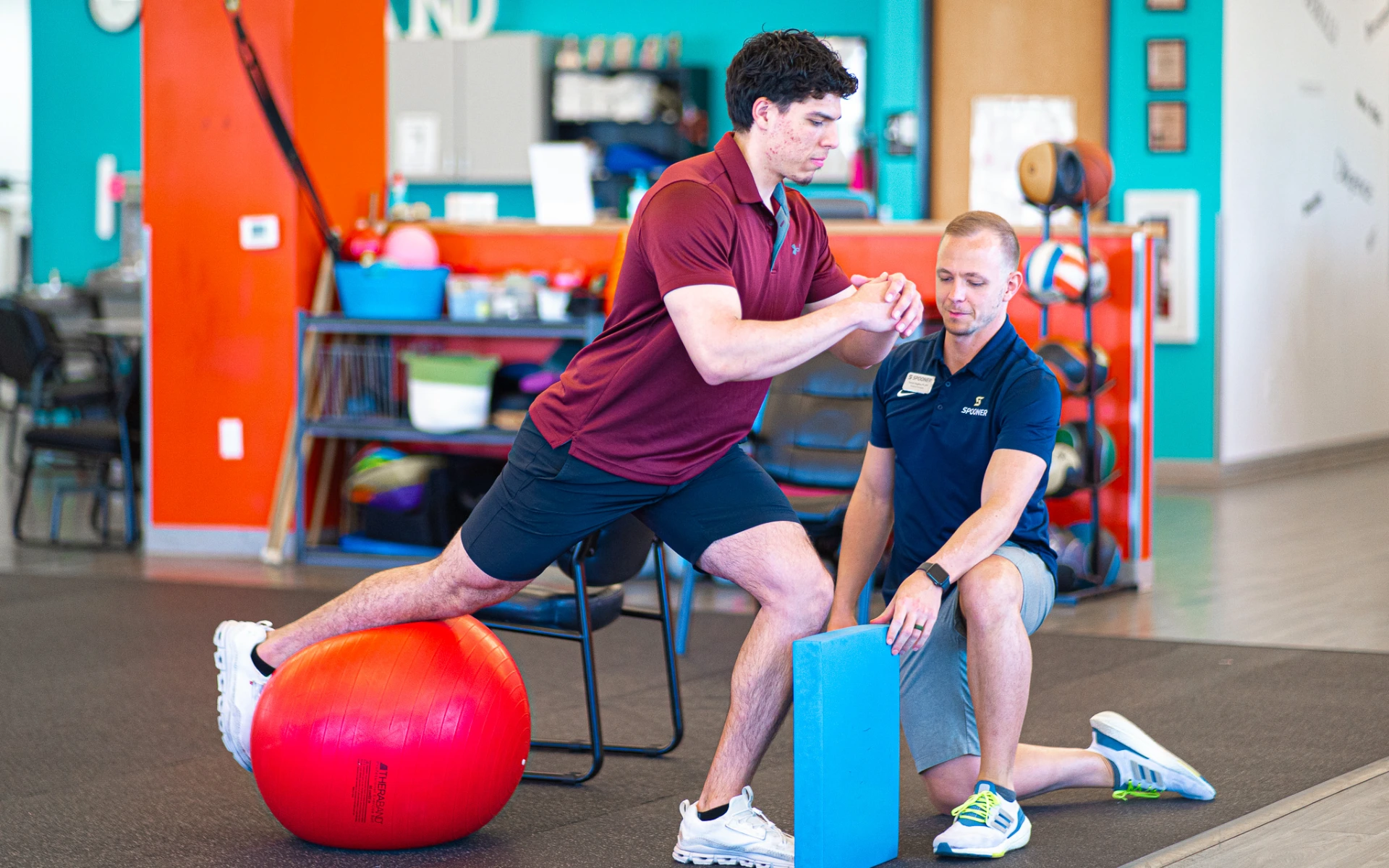Your knee is a complex joint comprised of many tendons that take on a great deal of impact with activity. At the very front of your knee, you have your kneecap, or your patella. You have a tendon- called the patellar tendon- that connects your kneecap to your tibia- aka your shin.
Tendonitis is inflammation of the tendon- any tendon. So, patellar tendonitis is inflammation of your patellar tendon. This inflammation can be caused by repetitive stress to the tendon from other structures of the leg connected to it.
What is important to remember is that your entire body is connected. Something that is moving wrong in your ankle will affect your knee and can move up the kinetic chain. Patellar tendonitis can be caused by an injury specific to your patellar tendon, or it can be a symptom of something else happening above or below your knee.
Symptoms of Patellar Tendonitis
Patellar tendonitis causes pain just below your kneecap. Your entire knee probably won’t hurt- just this one specific spot. Often, the pain can radiate down to where the patellar tendon anchors down in the shin.
There will be much more pain with kicking your foot out and extending your knee. It may not be tender to the touch, but movement may be painful.
It’s not uncommon to experience worsening discomfort, stress, or pain in the knee, hips, or ankles if the mechanism of stress is not addressed. This is likely due to other muscles and joints in the leg working hard as compensation due to pain.
Read about building tendon strength from “How To Build Tendon Strength: Eccentric, Isometric, And Plyometric Training“ on the Spooner Blog
A Symptom of Something Else
Often, knee pain is a secondary issue to another, primary issue.
Overuse of the Quad Complex
We move most in the sagittal (front-back) plane of motion. We sit in desks at work or at school, we run in a straight line, we workout in forward and backward motions, and so on. Because of this, we can depend on and overuse our quads- especially in activity.
There is extra strain placed on the patellar tendon in order to compensate for the strain placed on your quads.
Osgood Schlatter’s
Osgood Schlatter’s is an obvious overuse example of potential patellar tendonitis issues, especially in chronic cases. Repeated stress of the patellar tendon causes bony overgrowths below the kneecap. The bump itself can be painful, but the patellar tendon is also found to be tender, sore, or inflamed. With the patellar tendon continually tugging at the tibia, the bone adapts to the stress, and new bone growth is developed.
Running
Patellar tendonitis is often seen in conjunction with other conditions such as shin splints and plantar fasciitis, and these conditions are often a result of a chain reaction of stresses throughout the body during repetitive impact activity. Runners often experience this, but their specific running form may increase the chances of developing patellar tendonitis. For example, forefoot runners who do not control the eccentric loading and slam their heels into the ground may have a higher chance of tendonitis issues due to the increased stress from the heel up the chain, along with quadriceps overuse.
The repeated stress on the patellar tendon from the legs and shin hitting the ground while running can cause it to become inflamed, and worst-case scenario, patellar tendon rupture. Typically, with patellar tendonitis the pain is more pronounced when running downhill. In general, it’s always best to seek out a formal running evaluation from a skilled physical therapist to determine if your running pattern may be related to symptoms of patellar tendonitis.
PT for Patellar Tendonitis
Spooner physical therapists look at and appreciate the body as a whole. This way, we can help you move and feel better because we are going to be able to capture the full picture of what is causing you pain or discomfort.
We will be able to identify what is driving some of the faulty biomechanics that is happening and likely causing you further pain. Specifically with your knee, we will look to see if it is truly patellar tendonitis or if there is a deeper issue that is causing your knee pain.
Don’t let patellar tendonitis hold you back – schedule an appointment today to regain control over your mobility and comfort. Your journey to a pain-free life starts here.

